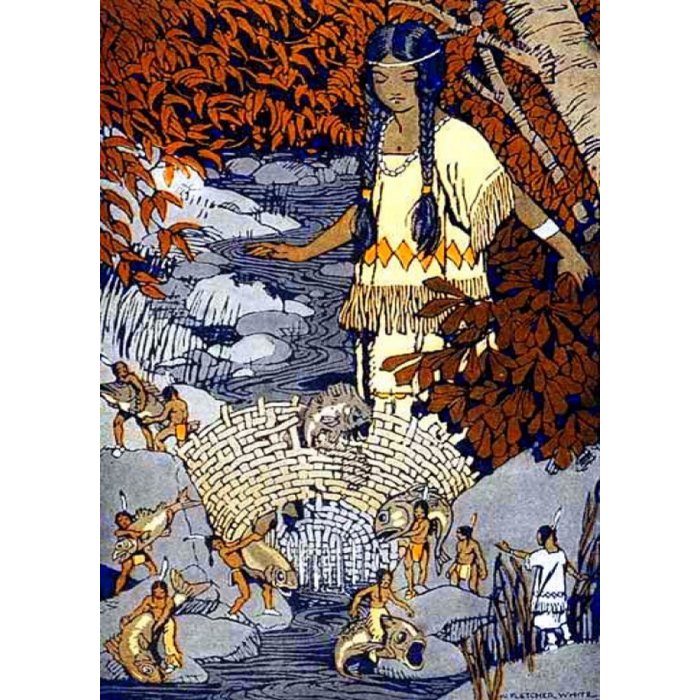Nimerigar: Mythological Race Of Little People Living In Wyoming
A. Sutherland - AncientPages.com - Native Americans of the Sioux, Cheyenne, Crow, and Arapaho have a rich oral tradition of a race of tiny people, commonly known as "little people."
The tradition of “little people” was widely known among the Native people, long before the European settlers came to North America. Image source
Also, Comanche stories of the so-called Nunnupis, Hawaii, have the Menehune and stories of Cherokee people mention the Yumwi.
According to stories, these "little people" are tiny creatures about 20 inches to three feet tall.
Some Native tribes called them "tiny people eaters," while others believed they were healers or probably spirits or mythological creatures similar to fairies and leprechauns.
The "little people" tradition was widely known among the Native people long before the European settlers came to North America.
According to the Shoshone Indians of Wyoming that share boundaries with such states as Montana, South Dakota, Nebraska, Colorado, Utah, and Idaho, these little people, known as the Nimerigar, were said to have lived in the Wind River and Pedro ranges of Wyoming.
Not human-friendly but rather aggressive, the Nimerigar used to shoot poisoned arrows from tiny bows.
Stories about the "little people" have been long regarded as human fantasies until certain discoveries began to suggest the contrary.
In 1932, a curious tiny mummy – about 6 ½ inches tall in its seated position, and estimated at 14 inches tall in a standing position – was found when Cecil Main and Frank Carr were digging for gold in the San Pedro Mountains about 60 miles southwest of Casper, Wyoming.
The ancient body's small size and features, later dubbed the Pedro Mountains Mummy, indicated it could once have been a member of the hidden race of the "little people" living in America.
Interestingly, in the book of William J. Bahmer, "Centennial History of Coshocton County," we learn that missionary David Zeisberger suggested in 1778 the possible existence of Nimerigar or other little peoples in North America. Near Cochocton, Ohio. Zeisberger believed that a particular burial ground contained several remains of a pygmy race, about 3 ft in height.
"The long rows of graves of the pygmy race at Coshocton were regularly arranged with heads to the west, a circumstance which has given rise to the theory that these people were sun-worshippers, facing the daily approach of the sun god over the eastern hills. Acceptance of the sun-worship surmise does not necessarily imply a deduction that this pygmy race may have descended from the river people of Hindostan or Egypt. Prehistoric man, wherever found, seems to have been a sun-worshipper".
Archaeological evidence of the Nimerigar creatures needs to be included. As long as we cannot find and examine the skeletons of this tiny race of beings, these creatures remain a mystery.
Written by – A. Sutherland - AncientPages.com Senior Staff Writer
Updated on January 6, 2024
Copyright © AncientPages.com All rights reserved. This material may not be published, broadcast, rewritten or redistributed in whole or part without the express written permission of AncientPages.com
Expand for referencesReferences:
Bahmer, William J. Centennial History of Coshocton County
Legendary Native American Figures: Nimerigar
More From Ancient Pages
-
 Extremely Rare 2,700-Year-Old Black Stone Seal Depicting A Winged Genie Discovered In Jerusalem
Archaeology | Sep 2, 2024
Extremely Rare 2,700-Year-Old Black Stone Seal Depicting A Winged Genie Discovered In Jerusalem
Archaeology | Sep 2, 2024 -
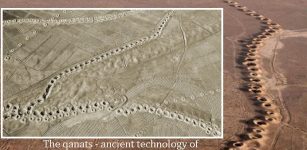 Qanats: Ancient 3,000-Year-Old Underground Irrigation Canals Invented By People Of Persia
Ancient Technology | Jul 13, 2020
Qanats: Ancient 3,000-Year-Old Underground Irrigation Canals Invented By People Of Persia
Ancient Technology | Jul 13, 2020 -
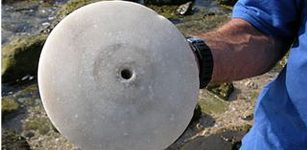 A 2,500-Year-Old Marble Disc, Designed To Protect Ancient Ships And Ward Off The Evil Eye – Discovered
Archaeology | Aug 4, 2023
A 2,500-Year-Old Marble Disc, Designed To Protect Ancient Ships And Ward Off The Evil Eye – Discovered
Archaeology | Aug 4, 2023 -
 Remains Of An Ancient Seaport In Asini, Greece Discovered By Underwater Archaeologists
Archaeology | Mar 12, 2025
Remains Of An Ancient Seaport In Asini, Greece Discovered By Underwater Archaeologists
Archaeology | Mar 12, 2025 -
 Mazu: Chinese Goddess Of The Sea – Protector Of Fishermen
Chinese Mythology | Apr 16, 2016
Mazu: Chinese Goddess Of The Sea – Protector Of Fishermen
Chinese Mythology | Apr 16, 2016 -
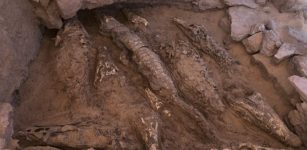 Mummified Crocodiles Provide Insights Into Mummy-Making Over Time
Archaeology | Jan 19, 2023
Mummified Crocodiles Provide Insights Into Mummy-Making Over Time
Archaeology | Jan 19, 2023 -
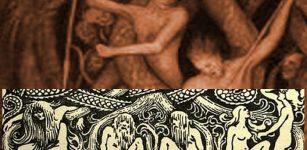 Nastrond (Náströnd): Grisly Hall Of Corpses – Norse Vision Of Most Terrible Place In Niflheim, Kingdom Of The Dead
Featured Stories | Sep 13, 2019
Nastrond (Náströnd): Grisly Hall Of Corpses – Norse Vision Of Most Terrible Place In Niflheim, Kingdom Of The Dead
Featured Stories | Sep 13, 2019 -
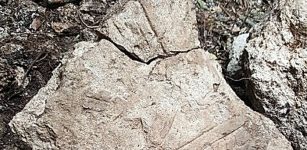 Extremely Brutal Conflicts Among Maya Broke Out Before Civilization’s Decline
Archaeology | Aug 8, 2019
Extremely Brutal Conflicts Among Maya Broke Out Before Civilization’s Decline
Archaeology | Aug 8, 2019 -
 1,500-Year-Old Roman Settlement Destroyed By The Goths Discovered In Bulgaria
Archaeology | Mar 21, 2025
1,500-Year-Old Roman Settlement Destroyed By The Goths Discovered In Bulgaria
Archaeology | Mar 21, 2025 -
 Ancient Bayanihan Tradition Of The Filipino People: Villagers Move Your Entire House Including Walls And Roof
Ancient Traditions And Customs | Sep 6, 2018
Ancient Bayanihan Tradition Of The Filipino People: Villagers Move Your Entire House Including Walls And Roof
Ancient Traditions And Customs | Sep 6, 2018 -
 New Paintings And Details Uncovered In The Egyptian Temple Of Esna
Places | Oct 22, 2024
New Paintings And Details Uncovered In The Egyptian Temple Of Esna
Places | Oct 22, 2024 -
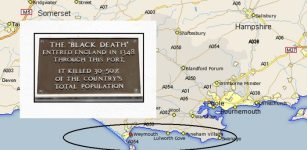 On This Day In History: Black Death Arrived In Britain – On June 24, 1348
News | Jun 24, 2016
On This Day In History: Black Death Arrived In Britain – On June 24, 1348
News | Jun 24, 2016 -
 Inscription At Aquae Calidae Sheds Light On Last Years Of Ancient Thrace’s History
News | Aug 30, 2015
Inscription At Aquae Calidae Sheds Light On Last Years Of Ancient Thrace’s History
News | Aug 30, 2015 -
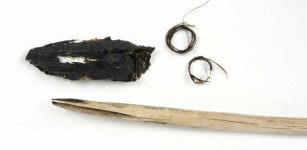 Surprising Discovery Of Unique 3,500- Year-Old Arrowheads Made Of Shells In The Jotunheimen Mountains
Archaeology | Feb 20, 2023
Surprising Discovery Of Unique 3,500- Year-Old Arrowheads Made Of Shells In The Jotunheimen Mountains
Archaeology | Feb 20, 2023 -
 3D Reconstruction Of ‘Lost Chapel’ Of Westminster Palace
Archaeology | Oct 9, 2017
3D Reconstruction Of ‘Lost Chapel’ Of Westminster Palace
Archaeology | Oct 9, 2017 -
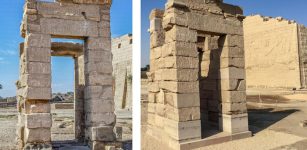 Ancient Egyptian Monuments Threatened By Climate Change Restored By Oriental Institute
News | Mar 9, 2023
Ancient Egyptian Monuments Threatened By Climate Change Restored By Oriental Institute
News | Mar 9, 2023 -
 Ancient Roman Basilica Discovered Under Commercial Building In London, UK
Archaeology | Feb 21, 2025
Ancient Roman Basilica Discovered Under Commercial Building In London, UK
Archaeology | Feb 21, 2025 -
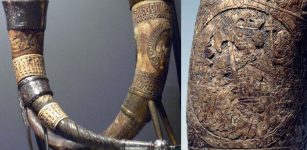 Ancient Icelandic Drinking Horn Reveals An Interesting Story About Saint-King Olaf
Ancient Traditions And Customs | Mar 29, 2017
Ancient Icelandic Drinking Horn Reveals An Interesting Story About Saint-King Olaf
Ancient Traditions And Customs | Mar 29, 2017 -
 Mystery Of A 5,000-Year-Old Mass Grave In Poland Reveals A Family Tragedy
Archaeology | May 14, 2019
Mystery Of A 5,000-Year-Old Mass Grave In Poland Reveals A Family Tragedy
Archaeology | May 14, 2019 -
 New Discovery: Unknown Use Of Yellow Colors In Ancient Egypt – Revealed
Archaeology | Oct 16, 2019
New Discovery: Unknown Use Of Yellow Colors In Ancient Egypt – Revealed
Archaeology | Oct 16, 2019

